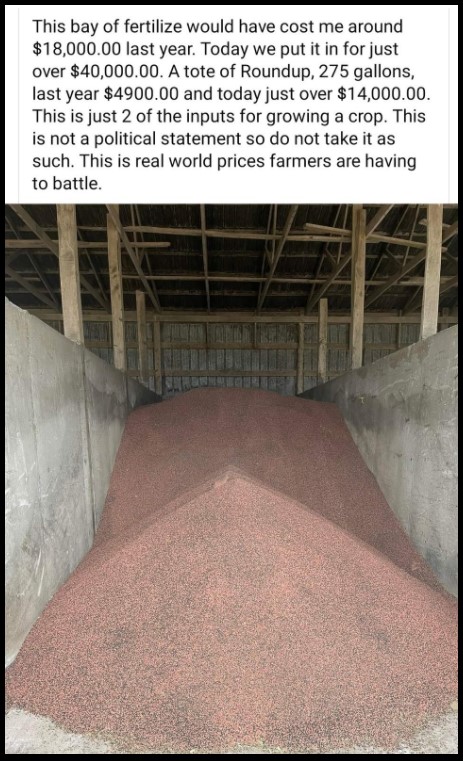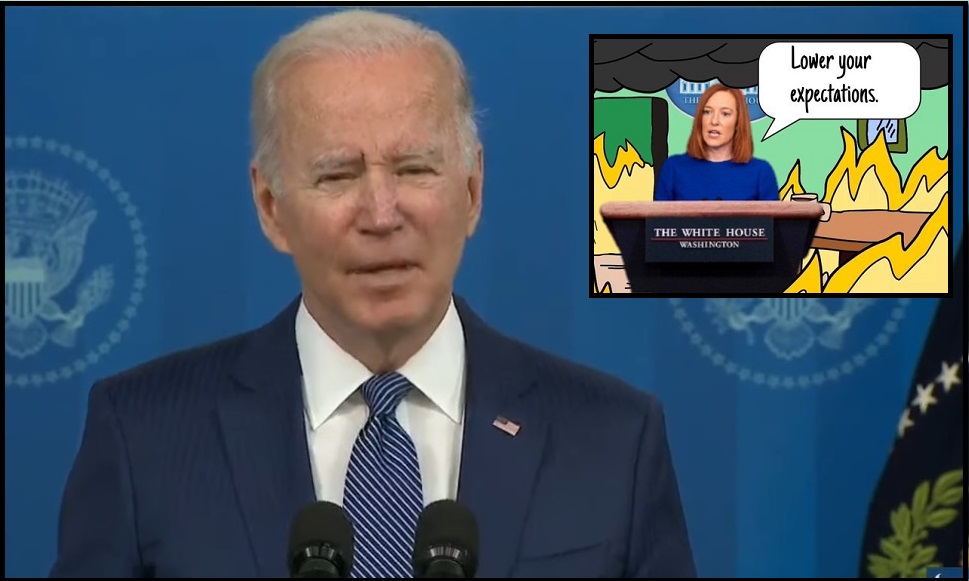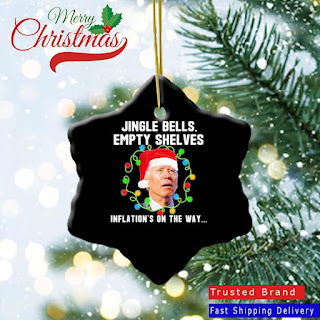An Example of Field to Fork Inflation
Here’s a solid example of what “field to fork” inflation is all about. Two images shared today point out how the farmland inflation originates, and how the farmland inflation surfaces in your life.
 The first image (pictured right) is a current price reference point for crop fertilizer [Source] from the perspective of the farmer preparing.
The first image (pictured right) is a current price reference point for crop fertilizer [Source] from the perspective of the farmer preparing.
To go into the deep weeds behind what is causing this massive jump in price, you can review THIS ARTICLE.
[…] “Compared to September 2020 prices, ammonia has increased over 210%, liquid nitrogen has increased over 159%, urea is up 155%, and MAP has increased 125%, while DAP is up over 100% and potash has risen above 134%.”
Those fertilizer component products are used for corn, wheat and soybeans crops.
[…] “Corn represents about 49% of the share of U.S. nutrient use, while wheat accounts for about 11% and soybeans account for 10%. Cumulatively, those three crops account for about 70% of U.S. fertilizer consumption.” {link}
Now, you might say those crops do not seem like they are that important. However, keep in mind that Corn, Wheat and Soybeans represent the baseline for not only grain production in the U.S, but they are also the primary feed products for proteins: chicken, pork and beef.
Worse yet, both grain and protein are the primary ingredients in pet foods; so pet food producers end up collecting even more price increases in their manufacturing. Have you noticed a shortage of pet food on your shopping trips?
When fertilizer goes up that high in price, the end cost of that harvest goes up in price, along with the end price of everything the harvest is used for.
So now we get to the point in the supply chain where these protein price increases show up to the average consumer.
This restaurant menu was shared with CTH today and reflects how the owners of this specific dining establishment are having to cope with the price of chicken from their wholesale supplier. This example shows just how rapidly -and unpredictably- the price increases are hitting the restaurant industry.

Yes, chicken wings are now CURRENTLY falling under “market price.”
This is the fork side of “field to fork” inflation, and the chicken wing price represents the outcome of a total supply chain under extreme inflationary pressure.
Keep in mind, what the farmer was sharing on Facebook, about the price of fertilizer and weed killer, are prices for the ‘next’ harvest, not the one he/she has already completed. The origin of the next harvest starts with components at prices 100 to 150 percent higher than the previous harvest.
Grain silos already loaded are carrying higher prices for the next several months, as the product flows through the supply chain and is used in the food production and feed of current ancillary users (manufacturers and protein providers). However, those prices are on the previous cost of production. When those grain silos need to be refilled, the next inbound harvest will have even higher costs.
When the current field inflation cumulates through the supply chain, the outcome will carry a price increase even higher than current.
I’ll bet there are a lot of restaurants visiting print shops to order new menus right now. By the time we get to Superbowl Sunday, the price of ¹chicken wings is going to bring sticker shock to those who have not prepared.
Last point…. If you’ve been wondering why there’s such a massive push from the communists toward “plant-based proteins“, and even meat grown in laboratories, this outcome is part of the reason. The climate change agenda -writ large- makes the traditional food supply skyrocket in price to unsustainable levels. The professional leftists have been using the Overton window to nudge people into accepting an entirely new diet.
[Same group pushing ‘tiny houses‘]
#Let’s Go Brandon.

[NOTE: ¹More chicken wings are purchased in the days leading up to the Superbowl than any other time of year.]





Post a Comment